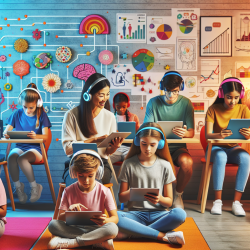Dyslexia, a specific learning disorder, affects approximately 5-15% of school children in the USA. Despite various therapies aimed at improving reading performance, many interventions require long-term practice and yield limited success. However, recent research by Werth and Bucci (2021) has shown promising results using a computer-guided reading strategy.
The study titled "Dyslexic Readers Improve without Training When Using a Computer-Guided Reading Strategy" investigated whether reading performance in dyslexic children could be improved immediately without prior training by altering the reading strategy with computer assistance. The results were remarkable: the rate of reading mistakes dropped by 69.97% immediately when a computer determined the reading process, achieving the highest effect size ever measured for a reading therapy (Cohen d = 2.649).
Here are key takeaways for practitioners looking to implement these findings:
- Individualized Reading Segments: Tailor the reading segments to the number of letters the child can recognize simultaneously. This ensures that the reading task is within their visual processing capabilities.
- Controlled Fixation Times: Use a computer program to control the fixation times on each word segment. This helps ensure that the child has enough time to recognize and process each segment before moving on.
- Guided Eye Movements: The computer should guide the child's eye movements, indicating where to fixate and how long to fixate. This prevents premature saccades and ensures proper visual processing.
- Speech-Onset Latency: Ensure that the time between the onset of the presentation of the word and the onset of pronunciation is sufficiently long. This prevents premature pronunciation and ensures accurate retrieval of the sound sequence from memory.
The research demonstrates that a computer-guided reading strategy can significantly reduce reading errors without the need for extensive training. This approach compensates for impaired reading abilities by adapting the reading strategy to the child's individual needs.
For practitioners, implementing a computer-guided reading strategy can be a game-changer in improving reading performance in dyslexic children. It offers a data-driven, individualized approach that yields immediate results.
To read the original research paper, please follow this link: Dyslexic Readers Improve without Training When Using a Computer-Guided Reading Strategy










